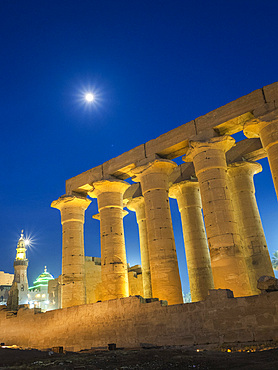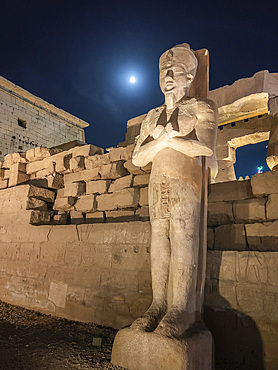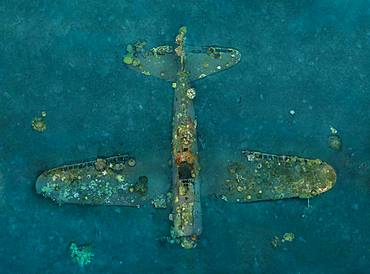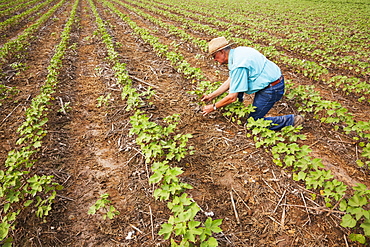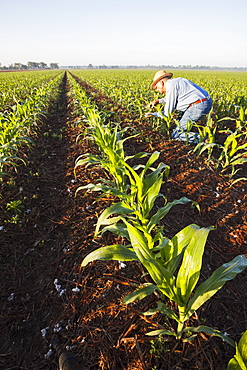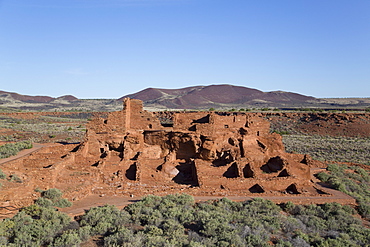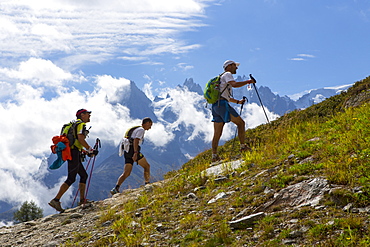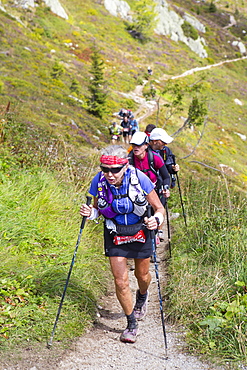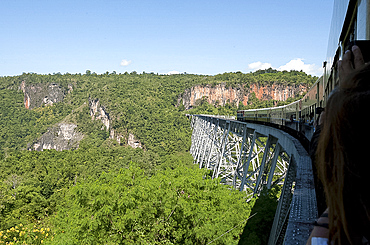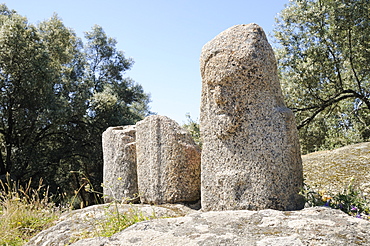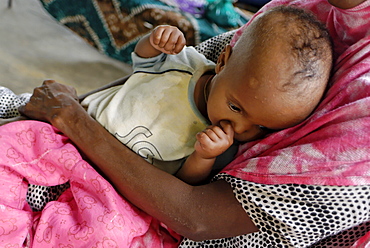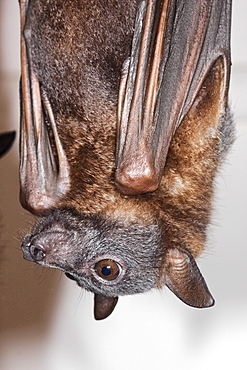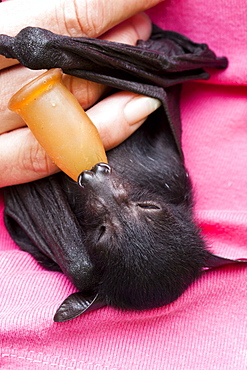Recent searches
Loading...
743-85 - Lion cub, Panthera leo, approximately two to three months old, Kruger National Park, South Africa, Africa
1243-543 - Panoramic view of vineyards and mountains near Wellington, a town in the Western Cape Winelands, a 45-minute drive from Cape Town, in South Africa with a population of approximately 62,000
860-292276 - The Petrified Forest National Park is home to thousands of fossilized tree trunks approximately 200 million years old (Triassic period). Arizona. USA.
1112-7828 - Reliefs and paintings in the tomb of Tutankhamun, who reigned approximately 1334 to 1325 BC, Dynasty 18, Valley of the Kings, UNESCO World Heritage Site, Thebes, Egypt, North Africa, Africa
1112-7827 - The Luxor Temple at night, under a full moon, constructed approximately 1400 BCE, UNESCO World Heritage Site, Luxor, Thebes, Egypt, North Africa, Africa
1112-7823 - The Luxor Temple at night, under a full moon, constructed approximately 1400 BCE, UNESCO World Heritage Site, Luxor, Thebes, Egypt, North Africa, Africa
1112-7813 - Reliefs and paintings in the tomb of Tutankhamun, who reigned from approximately 1334 to 1325 BC, Dynasty 18, Valley of the Kings, UNESCO World Heritage Site, Thebes, Egypt, North Africa, Africa
1112-7812 - The Luxor Temple at night, under a full moon, constructed approximately 1400 BCE, UNESCO World Heritage Site, Luxor, Thebes, Egypt, North Africa, Africa
1112-7795 - The Luxor Temple at night, under a full moon, constructed approximately 1400 BCE, UNESCO World Heritage Site, Luxor, Thebes, Egypt, North Africa, Africa
1112-7794 - Obelisk at the Luxor Temple, at night under a full moon, constructed approximately 1400 BCE, UNESCO World Heritage Site, Luxor, Thebes, Egypt, North Africa, Africa
1112-7793 - The Luxor Temple at night, under a full moon, constructed approximately 1400 BCE, UNESCO World Heritage Site, Luxor, Thebes, Egypt, North Africa, Africa
1112-7779 - The Luxor Temple at night, a large Ancient Egyptian temple complex constructed approximately 1400 BCE, UNESCO World Heritage Site, Luxor, Thebes, Egypt, North Africa, Africa
1112-7763 - The Luxor Temple at night, a large Ancient Egyptian temple complex constructed approximately 1400 BCE, UNESCO World Heritage Site, Luxor, Thebes, Egypt, North Africa, Africa
1112-7760 - The Luxor Temple at night, a large Ancient Egyptian temple complex constructed approximately 1400 BCE, Luxor, UNESCO World Heritage Site, Luxor, Thebes, Egypt, North Africa, Africa
1112-7758 - The Luxor Temple at night, a large Ancient Egyptian temple complex constructed approximately 1400 BCE, UNESCO World Heritage Site, Luxor, Thebes, Egypt, North Africa, Africa
1112-7757 - The Luxor Temple at night, a large Ancient Egyptian temple complex constructed approximately 1400 BCE, UNESCO World Heritage Site, Luxor, Thebes, Egypt, North Africa, Africa
832-401976 - Fountain Stormy Waves by Robert Diez, Albertplatz, an approximately circular square in the district of Innere Neustadt, Dresden, Saxony, Germany, Europe
1350-6678 - Strawberry Poison Frog (Dendrobates pumilio), adult, Bastimentos National Park, Bocas del Toro, Panama. The strawberry poison frog or strawberry poison-dart frog (Oophaga pumilio or Dendrobates pumilio) is a species of small amphibian poison dart frog found in Central America. It is common throughout its range, which extends from eastern central Nicaragua through Costa Rica and northwestern Panama. The species is often found in humid lowlands and premontane forest, but large populations are also found in disturbed areas such as plantations. The strawberry poison frog is perhaps most famous for its widespread variation in coloration, comprising approximately 15���30 color morphs, most of which are presumed to be true-breeding. O. pumilio, while not the most poisonous of the dendrobatids, is the most toxic member of its genus. The species is most diverse in Panama with varieties in vivid shades of all red, orange, blue, yellow or green, green and yellow, white with red, orange or black and spotted varieties. The most colorful mix is found in Isla Bastimentos Marine National Park though not all in one place. Colors vary by location. A beach on the north side of the island is named after the species. Two of Southern Explorations' Panama tours visit red frog habitat. Both the eight-day Panama Adventure trip and eleven-day Panama Highlights trip spend time in Isla Bastimentos Marine National Park and the former also goes to Red Frog Beach.
The red frog is not as poisonous as some of its cousins and is not a threat to humans. It subsists on a diet of ants that dine on poisonous plants, providing the red frog its protective skin toxin. Males attract females with a loud quick chirp. To hear the distinctive sound before you depart on your Panama tours, go to the University of Michigan Museum's biodiversity website (www.animaldiversity.ummz.umich.edu.) After birth, the tadpoles climb aboard the mother who deposits them in different protected areas where she retu
1116-51317 - The Hverfjall crater, a tephra cone or tuff ring volcano in Northern Iceland. The crater is approximately 1 kilometre in diameter; Skutustadahreppur, Northeastern Region, Iceland
1350-48 - The 6.5-day-old Moon (approximately) with the Lunar X (below centre) and V (above centre) formations well lit on the terminator. This phase has an incredible amount of detail and variety of features visible along the terminator.
1350-46 - The 6.5-day-old Moon (approximately) with the Lunar X (below centre) and V (above centre) formations well lit on the terminator. This phase has an incredible amount of detail and variety of features visible along the terminator.
1287-111 - The Loup of Fintry waterfall on the River Endrick, located approximately two miles from Fintry village, near Stirling, Scotland, United Kingdom, Europe
1287-110 - The Loup of Fintry waterfall on the River Endrick, located approximately two miles from Fintry village, near Stirling, Scotland, United Kingdom, Europe
1287-112 - The Loup of Fintry waterfall on the River Endrick, located approximately two miles from Fintry village, near Stirling, Scotland, United Kingdom, Europe
1287-113 - The Loup of Fintry waterfall on the River Endrick, located approximately two miles from Fintry village, near Stirling, Scotland, United Kingdom, Europe
1116-46836 - The larval stage of a tube anemone (Cerianthus sp), likely around 30 days old at this point, will settle on the bottom at approximately 100 days. Photographed at night one mile off the island of Yap, Yap, Federated States of Micronesia
860-287442 - Tara Pacific expedition - november 2017 Kimbe Bay, papua New Guinea, Zero wreck: Coral growth on this wreck is from a period of 74 years ! D: 15 m The ZERO, is a Japanese WW2 fighter plane wreck. This Zero wreck was discovered in January 2000 by local William Nuli while he was freediving for sea cucumbers. He asked the Walindi Plantation Resort dive team if they might know what it was, and when they investigated they uncovered the intact wreck of a Zero fighter, resting on a sedimented bottom in 15 m depth. This World War II Japanese fighter is almost completely intact. The plane is believed to have been ditched, the pilot is believed to have survived, but was never found on the island. He never returned home. Maybe he disappeared in the jungle? On 26th December 1943, during the battle of Cape Gloucester, the Japanese pilot made an emergency landing, ditching his Mitsubishi A6M Zero plane into the sea approximately 100m off West New Britain Province. The plane was piloted by PO1 Tomiharu Honda of the 204st K?k?tai. His fate is unknown but it is believed the he made a controlled water landing after running out of fuel and survived. Although he failed to return to his unit, the plane was found with the throttle and trim controls both set for landing and the canopy was open. There are no visible bullet holes or other shrapnel damage and the plane is still virtually intact after over 70 years underwater. It is a A6M2 Model 21 Zero, made famous for its use in Kamikaze attacks by the Japanese Imperial Navy. The wreck has the Manufacture Number 8224 and was built by Nakajima in late August 1942.
860-287440 - Tara Pacific expedition - november 2017 Zero wreck, vertical view Orthomosaic from 3D photogrammetry (13500 x 10000 px). D: 15 m Kimbe Bay, papua New Guinea, Coral growth on this wreck is from a period of 74 years ! The ZERO, is a Japanese WW2 fighter plane wreck. This Zero wreck was discovered in January 2000 by local William Nuli while he was freediving for sea cucumbers. He asked the Walindi Plantation Resort dive team if they might know what it was, and when they investigated they uncovered the intact wreck of a Zero fighter, resting on a sedimented bottom in 15 m depth. This World War II Japanese fighter is almost completely intact. The plane is believed to have been ditched, the pilot is believed to have survived, but was never found on the island. He never returned home. Maybe he disappeared in the jungle? On 26th December 1943, during the battle of Cape Gloucester, the Japanese pilot made an emergency landing, ditching his Mitsubishi A6M Zero plane into the sea approximately 100m off West New Britain Province. The plane was piloted by PO1 Tomiharu Honda of the 204st K?k?tai. His fate is unknown but it is believed the he made a controlled water landing after running out of fuel and survived. Although he failed to return to his unit, the plane was found with the throttle and trim controls both set for landing and the canopy was open. There are no visible bullet holes or other shrapnel damage and the plane is still virtually intact after over 70 years underwater. It is a A6M2 Model 21 Zero, made famous for its use in Kamikaze attacks by the Japanese Imperial Navy. The wreck has the Manufacture Number 8224 and was built by Nakajima in late August 1942.
801-2468 - Big Crane Pictograph, made by Ancestral Puebloans, approximately 900-1000 years old, Bear's Ears National Monument, Utah, United States of America, North America
801-2225 - Chac-mool sculpture, dating from approximately 1350 AD, Templo Mayor, Mexico City, Mexico, North America
1116-39471 - No till Roundup ready cotton in approximately 8-10 leaf stage with volunteer cotton, England, Arkansas, United States of America
1116-39473 - Crop consultant examines conventional till corn at approximately 8-10 leaf stage, growing on bedded land for furrow irrigation, England, Arkansas, United States of America
1116-39474 - Crop consultant examines no till corn at approximately 8-10 leaf stage, growing on bedded land where previous crop of no till cotton was produced, England, Arkansas, United States of America
1116-39470 - Crop consultant checking progress on no till cotton, approximately 10-12 leaf stage, following previous year's crop of corn, England, Arkansas, United States of America
801-1836 - Lomaki Pueblo, inhabited from approximately 1100 AD to 1250 AD, Wupatki National Monument, Arizona, United States of America, North America
801-1835 - Lomaki Pueblo, inhabited from approximately 1100 AD to 1250 AD, Wupatki National Monument, Arizona, United States of America, North America
801-1832 - Wukoki Pueblo, inhabited from approximately 1100 AD to 1250 AD, Wupatki National Monument, Arizona, United States of America, North America
801-1834 - Kiva in foreground, Wupatki Pueblo, inhabited from approximately 1100 AD to 1250 AD, Wupatki National Monument, Arizona, United States of America, North America
801-1833 - Wupatki Pueblo, inhabited from approximately 1100 AD to 1250 AD, Wupatki National Monument, Arizona, United States of America, North America
857-92685 - Three participants of the UTMB are running in the hills of Chamonix. The famous peaks of the Mont Blanc range are in the background. The Ultra-Trail du Mont-Blanc (also referred to as UTMB) is a single-stage mountain ultramarathon. It takes place once a year in the Alps, across France, Italy and Switzerland. The distance is approximately 166 kilometres (103 mi), with a total elevation gain of around 9,600 m. It is widely regarded as one of the most difficult foot races in Europe. It's certainly one of the largest with over two thousand starters. The combined participation in all of the events is approaching 10 thousand runners. While the best runners complete the loop in slightly more than 20 hours, most runners take 30 to 45 hours to reach the finish line.
857-92684 - An elderly woman is running in the hills of Chamonix. She is close to finishing the extremely exhausting UTMB race. The Ultra-Trail du Mont-Blanc (also referred to as UTMB) is a single-stage mountain ultramarathon. It takes place once a year in the Alps, across France, Italy and Switzerland. The distance is approximately 166 kilometres (103 mi), with a total elevation gain of around 9,600 m. It is widely regarded as one of the most difficult foot races in Europe. It's certainly one of the largest with over two thousand starters. The combined participation in all of the events is approaching 10 thousand runners. While the best runners complete the loop in slightly more than 20 hours, most runners take 30 to 45 hours to reach the finish line.
805-909 - The Goteik viaduct, constructed in 1899, 689 metres long and approximately 250 metres high, Nawnghkio, Shan state, Myanmar (Burma), Asia
832-351027 - Glass dome Galeria Vittorio Emanuele II. Milan Lombardy Italy
832-350802 - Rococo style tea house pavilion Weissenburgpark Stuttgart Baden Wuerttemberg Germany
832-285532 - Lit dome on the rReichstag in the evening, Berlin, Germany, Europe
747-1423 - Architectural detail of a culvert exit approximately 30 cm high, under the wall of the AD 130 Cilurnum - Chesters Roman Fort, Chollerford, Northumbria National Park, England, United Kingdom, Europe
989-155 - Carved Bronze Age granite statue menhirs at Filitosa, approximately 3500 years old, one intact with a grumpy face, Corsica, France, Europe
1195-12 - Kenya,dadaab refugees camp, somalian border gtz hospital ,the camps were set up around the town of dadaab beginning in 1991 when civil wars erupted on a grand scale in somalia (16 rival factions were involved). The wars, along with a prolonged drought, forced more than 900,000 somalis to flee to neighboring countries. Approximately 400,000 of them, many of whom were in a serious state of exhaustion and starvation, took refuge in kenya. Since then, a majority have returned to their country. However, some 131,000 somalis remain in kenya, and 110,000 are in dadaab, along with some sudanese, ugandans, and about 3,000 ethiopians women waiting the receive care from gtz ngo at the local hospital
1195-9 - Kenya,dadaab refugees camp, somalian border gtz hospital ,the camps were set up around the town of dadaab beginning in 1991 when civil wars erupted on a grand scale in somalia (16 rival factions were involved). The wars, along with a prolonged drought, forced more than 900,000 somalis to flee to neighboring countries. Approximately 400,000 of them, many of whom were in a serious state of exhaustion and starvation, took refuge in kenya. Since then, a majority have returned to their country. However, some 131,000 somalis remain in kenya, and 110,000 are in dadaab, along with some sudanese, ugandans, and about 3,000 ethiopians women waiting the receive care from gtz ngo at the local hospital
1195-1 - Kenya,dadaab refugees camp, somalian border gtz hospital ,the camps were set up around the town of dadaab beginning in 1991 when civil wars erupted on a grand scale in somalia (16 rival factions were involved). The wars, along with a prolonged drought, forced more than 900,000 somalis to flee to neighboring countries. Approximately 400,000 of them, many of whom were in a serious state of exhaustion and starvation, took refuge in kenya. Since then, a majority have returned to their country. However, some 131,000 somalis remain in kenya, and 110,000 are in dadaab, along with some sudanese, ugandans, and about 3,000 ethiopians women waiting the receive care from gtz ngo at the local hospital . wounds due to boiling water for tea . lots of kids get burned by open flames fires into the camp as they play around without parents control
1195-11 - Kenya,dadaab refugees camp, somalian border gtz hospital ,the camps were set up around the town of dadaab beginning in 1991 when civil wars erupted on a grand scale in somalia (16 rival factions were involved). The wars, along with a prolonged drought, forced more than 900,000 somalis to flee to neighboring countries. Approximately 400,000 of them, many of whom were in a serious state of exhaustion and starvation, took refuge in kenya. Since then, a majority have returned to their country. However, some 131,000 somalis remain in kenya, and 110,000 are in dadaab, along with some sudanese, ugandans, and about 3,000 ethiopians women waiting the receive care from gtz ngo at the local hospital
1195-6 - Kenya,dadaab refugees camp, somalian border gtz hospital ,the camps were set up around the town of dadaab beginning in 1991 when civil wars erupted on a grand scale in somalia (16 rival factions were involved). The wars, along with a prolonged drought, forced more than 900,000 somalis to flee to neighboring countries. Approximately 400,000 of them, many of whom were in a serious state of exhaustion and starvation, took refuge in kenya. Since then, a majority have returned to their country. However, some 131,000 somalis remain in kenya, and 110,000 are in dadaab, along with some sudanese, ugandans, and about 3,000 ethiopians women waiting the receive care from gtz ngo at the local hospital
1195-10 - Kenya,dadaab refugees camp, somalian border gtz hospital ,the camps were set up around the town of dadaab beginning in 1991 when civil wars erupted on a grand scale in somalia (16 rival factions were involved). The wars, along with a prolonged drought, forced more than 900,000 somalis to flee to neighboring countries. Approximately 400,000 of them, many of whom were in a serious state of exhaustion and starvation, took refuge in kenya. Since then, a majority have returned to their country. However, some 131,000 somalis remain in kenya, and 110,000 are in dadaab, along with some sudanese, ugandans, and about 3,000 ethiopians women waiting the receive care from gtz ngo at the local hospital
1195-2 - Kenya,dadaab refugees camp, somalian border gtz hospital ,the camps were set up around the town of dadaab beginning in 1991 when civil wars erupted on a grand scale in somalia (16 rival factions were involved). The wars, along with a prolonged drought, forced more than 900,000 somalis to flee to neighboring countries. Approximately 400,000 of them, many of whom were in a serious state of exhaustion and starvation, took refuge in kenya. Since then, a majority have returned to their country. However, some 131,000 somalis remain in kenya, and 110,000 are in dadaab, along with some sudanese, ugandans, and about 3,000 ethiopians women waiting the receive care from gtz ngo at the local hospital
1195-8 - Kenya,dadaab refugees camp, somalian border gtz hospital ,the camps were set up around the town of dadaab beginning in 1991 when civil wars erupted on a grand scale in somalia (16 rival factions were involved). The wars, along with a prolonged drought, forced more than 900,000 somalis to flee to neighboring countries. Approximately 400,000 of them, many of whom were in a serious state of exhaustion and starvation, took refuge in kenya. Since then, a majority have returned to their country. However, some 131,000 somalis remain in kenya, and 110,000 are in dadaab, along with some sudanese, ugandans, and about 3,000 ethiopians women waiting the receive care from gtz ngo at the local hospital
1195-3 - Kenya,dadaab refugees camp, somalian border gtz hospital ,the camps were set up around the town of dadaab beginning in 1991 when civil wars erupted on a grand scale in somalia (16 rival factions were involved). The wars, along with a prolonged drought, forced more than 900,000 somalis to flee to neighboring countries. Approximately 400,000 of them, many of whom were in a serious state of exhaustion and starvation, took refuge in kenya. Since then, a majority have returned to their country. However, some 131,000 somalis remain in kenya, and 110,000 are in dadaab, along with some sudanese, ugandans, and about 3,000 ethiopians women waiting the receive care from gtz ngo at the local hospital
1195-7 - Kenya,dadaab refugees camp, somalian border gtz hospital ,the camps were set up around the town of dadaab beginning in 1991 when civil wars erupted on a grand scale in somalia (16 rival factions were involved). The wars, along with a prolonged drought, forced more than 900,000 somalis to flee to neighboring countries. Approximately 400,000 of them, many of whom were in a serious state of exhaustion and starvation, took refuge in kenya. Since then, a majority have returned to their country. However, some 131,000 somalis remain in kenya, and 110,000 are in dadaab, along with some sudanese, ugandans, and about 3,000 ethiopians women waiting the receive care from gtz ngo at the local hospital
1195-4 - Kenya,dadaab refugees camp, somalian border gtz hospital ,the camps were set up around the town of dadaab beginning in 1991 when civil wars erupted on a grand scale in somalia (16 rival factions were involved). The wars, along with a prolonged drought, forced more than 900,000 somalis to flee to neighboring countries. Approximately 400,000 of them, many of whom were in a serious state of exhaustion and starvation, took refuge in kenya. Since then, a majority have returned to their country. However, some 131,000 somalis remain in kenya, and 110,000 are in dadaab, along with some sudanese, ugandans, and about 3,000 ethiopians women waiting the receive care from gtz ngo at the local hospital
1195-14 - Kenya,dadaab refugees camp, somalian border gtz hospital ,the camps were set up around the town of dadaab beginning in 1991 when civil wars erupted on a grand scale in somalia (16 rival factions were involved). The wars, along with a prolonged drought, forced more than 900,000 somalis to flee to neighboring countries. Approximately 400,000 of them, many of whom were in a serious state of exhaustion and starvation, took refuge in kenya. Since then, a majority have returned to their country. However, some 131,000 somalis remain in kenya, and 110,000 are in dadaab, along with some sudanese, ugandans, and about 3,000 ethiopians women waiting the receive care from gtz ngo at the local hospital .malnourrish child
1195-5 - Kenya,dadaab refugees camp, somalian border gtz hospital ,the camps were set up around the town of dadaab beginning in 1991 when civil wars erupted on a grand scale in somalia (16 rival factions were involved). The wars, along with a prolonged drought, forced more than 900,000 somalis to flee to neighboring countries. Approximately 400,000 of them, many of whom were in a serious state of exhaustion and starvation, took refuge in kenya. Since then, a majority have returned to their country. However, some 131,000 somalis remain in kenya, and 110,000 are in dadaab, along with some sudanese, ugandans, and about 3,000 ethiopians women waiting the receive care from gtz ngo at the local hospital
1195-13 - Kenya,dadaab refugees camp, somalian border gtz hospital ,the camps were set up around the town of dadaab beginning in 1991 when civil wars erupted on a grand scale in somalia (16 rival factions were involved). The wars, along with a prolonged drought, forced more than 900,000 somalis to flee to neighboring countries. Approximately 400,000 of them, many of whom were in a serious state of exhaustion and starvation, took refuge in kenya. Since then, a majority have returned to their country. However, some 131,000 somalis remain in kenya, and 110,000 are in dadaab, along with some sudanese, ugandans, and about 3,000 ethiopians women waiting the receive care from gtz ngo at the local hospital
979-6757 - A pod of approximately 200 melon-headed whales (Peponocephala electra) encountered off the island of Brava, Cape Verde Islands, in the north Atlantic Ocean
979-6756 - A pod of approximately 200 melon-headed whales (Peponocephala electra) encountered off the island of Brava, Cape Verde Islands, in the north Atlantic Ocean
979-6758 - A pod of approximately 200 melon-headed whales (Peponocephala electra) encountered off the island of Brava, Cape Verde Islands, in the north Atlantic Ocean
979-5159 - Adult humpback whale (Megaptera novaeangliae) sub-surface feeding among black-legged kittiwakes (Rissa tridactyla) off the continental shelf west of Spitsbergen in the Barents Sea, Norway. Humpbacks are one of the larger rorqual species, adults range in length from 12?16 metres (40?50 ft) and weigh approximately 36,000 kilograms (79,000 lb). There are at least 80,000 humpback whales worldwide.
979-5160 - Adult humpback whale (Megaptera novaeangliae) sub-surface feeding among black-legged kittiwakes (Rissa tridactyla) off the continental shelf west of Spitsbergen in the Barents Sea, Norway. Humpbacks are one of the larger rorqual species, adults range in length from 12?16 metres (40?50 ft) and weigh approximately 36,000 kilograms (79,000 lb). There are at least 80,000 humpback whales worldwide.
979-6755 - A pod of approximately 200 melon-headed whales (Peponocephala electra) encountered off the island of Brava, Cape Verde Islands, in the north Atlantic Ocean
979-5158 - Adult humpback whale (Megaptera novaeangliae) sub-surface feeding among black-legged kittiwakes (Rissa tridactyla) off the continental shelf west of Spitsbergen in the Barents Sea, Norway. Humpbacks are one of the larger rorqual species, adults range in length from 12?16 metres (40?50 ft) and weigh approximately 36,000 kilograms (79,000 lb). There are at least 80,000 humpback whales worldwide.
979-6759 - A pod of approximately 200 melon-headed whales (Peponocephala electra) encountered off the island of Brava, Cape Verde Islands, in the north Atlantic Ocean
940-40 - Juvenile little red Flying-fox (Pteropus scapulatus) male approximately 23 weeks old in care, Hopkins Creek, New South Wales, Australia, Pacific
940-24 - Orphaned baby black flying-fox (Pteropus alecto) being fed, approximately 12 days old, Hopkins Creek, New South Wales, Australia, Pacific
940-43 - Mountain brushtail possum (Trichosurus caninus) emerging from artificial nestbox, hand-reared sub-adult male approximately 12 months old, Hopkins Creek, New South Wales, Australia, Pacific
940-41 - Orphaned baby black flying-fox (Pteropus alecto) resting after feed, approximately 4 weeks old, Hopkins Creek, New South Wales, Australia, Pacific
940-29 - Orphaned baby black flying-fox (Pteropus alecto) approximately 4 weeks old, asleep in hand, Hopkins Creek, New South Wales, Australia, Pacific
829-983 - Landscape along the RN6 road approximately 200 kms north of Antananarivo, Madagascar, Africa
829-984 - Landscape along the RN6 road approximately 200 kms north of Antananarivo, Madagascar, Africa
829-957 - Landscape with rice paddies and assorted crops approximately 20 kms north of Antananarivo, Madagascar, Africa
743-216 - Lion cubs approximately 2-3 months old, Kruger National Park, South Africa, Africa
743-104 - Lion cub, Panthera leo, approximately two to three months old, Kruger National Park, South Africa, Africa
743-58 - Lion cub, Panthera leo, approximately two to three months old, Kruger National Park, South Africa, Africa
743-131 - Lion cub, Panthera leo, approximately two to three months old, Kruger National Park, South Africa, Africa
120-4364 - Maiden Stone with Pictish symbols, near Chapel of Garioch, approximately 15 miles northwest of Aberdeen, Grampian Region, Scotland, United Kingdom, Europe
511-6082 - Citania de Briteiros, a Celtic iron age settlement dating from approximately 300 BC, with foundations of 150 huts, funerary chamber with carved doorway, near Braga, Minho, Portugal, Europe
511-5934 - Citania de Briteiros, a Celtic iron age settlement dating from approximately 300 BC, with foundations of 150 round huts and paved streets, near Braga, Minho, Portugal, Europe
511-6081 - Citania de Briteiros, a Celtic iron age settlement dating from approximately 300 BC, with foundations of 150 round huts and paved streets, near Braga, Minho, Portugal, Europe
You reached the end of search results




